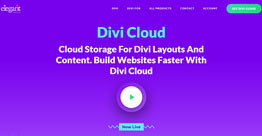Creative entrepreneurs struggle with pricing more than any other group I know. We all seem to struggle and second-guess ourselves while working on a client quote. Many of us are looking for a system to either simplify the process or give us confidence as we bid. The debate seems to center on questions of hourly vs. project pricing schemes. We wonder when an hourly rate is most appropriate and when project based pricing will give us greater flexibility and profitability. We’re looking for guidance and a way to balance the two in our minds. We don’t realize that both systems actually begin with an understanding of time and how the time you invest in a project translates to profitable pricing.
Do you know your internal base rate?
Effective pricing begins with time. Regardless of whether you bill your clients by the hour or quote a project fee, you need to understand how much time is invested in an average project and the base rate you need to charge per hour to cover your costs. Your business has an overhead (or burden) rate – the amount of money it takes per hour to pay all the bills and keep things running smoothly. This isn’t profit – it’s just the minimum amount per hour to get you to the “break even” point financially. You calculate this burden rate by dividing your total monthly expenses by the number of productive hours you work each month. (Pro tip: Hours you spend marketing or doing administrative work do not count here. Just hours doing work you bill to clients.)
Total monthly expenses / total hours doing client work = hourly burden rate
Your burden rate is the lowest amount you can earn per hour of billable time without losing money. It does not include any profit… just expenses. But it is the absolute lowest you can go when billing a client before you’re in big trouble.
Now, let’s talk about profit. Profit is the amount of money you want to earn per month after all of the bills are paid. This is the money you pay yourself or put away for later investment into your business.
The difference between your burden rate and your internal hourly rate is profit.
Calculate your internal hourly rate using a similar formula – one that combines monthly expenses and monthly desired profit and divides the total by productive hours you work each month.
(total monthly expenses + desired monthly profit) / total productive hours = internal hourly rate
Not sure how this works? Here’s an example. Let’s say your total monthly expenses are $1,000 and you want to generate $2,000 per month in profit. You typically spend 15 hours per week on client work which means you have 60 total productive hours in a normal month.
($1,000 + $2,000) / 60 hour = $50/hr
This number is your “internal” hourly rate because it is intended for internal use only. This is not necessarily a number you quote to your clients. It is just the amount you should bill for each productive hour in order to earn the level of profit you desire. You need to understand your internal hourly rate in order to price effectively – in either an hourly or a project scheme.
The case for hourly pricing
The lovely thing about hourly pricing is the simplicity. We all understand how it works… you bill $X for each hour of work you do for a client.
You can sell the client prepaid time blocks (10 hours @$X/hr, etc.) or you can simply provide the work and send periodic invoices. You can even create some kind of retainer system in which the client pays you a set amount each month in exchange for X amount of your time.
As a creative entrepreneur, you don’t have to worry about estimating time when billing on an hourly scheme. You also don’t have to struggle with scope expansion or holding a client accountable to the initial project plan. You simply do the work and get paid for it.
Of course, there are drawbacks to hourly pricing as well. The big ones include talking about your hourly rate with clients, scheduling issues, and client estimate requests. Let’s look at each of these…
Discussing your hourly rates can cause problems with clients due to the perceived value of money. Quoting an hourly rate to a client opens the door to a discussion of value that can get petty.
I’ve found that most clients have an opinion about what I “should” charge for my work, and it often isn’t exactly the same as mine. Instead, it is often based on what they pay in-house creative employees or what they earn themselves. This can create an awkward situation… especially when you quote an hourly rate that is significantly higher than what the client makes in his role.
Scheduling issues arise with hourly clients. When you book a big project, you typically block out time in your calendar to do the work. This is pretty straightforward, but something surprising happens in an hourly scheme. The client often comes to believe you are available quickly for their additional requests. After all, they pay you for your time… they ought to be able to use it when they like.
Time estimates can be difficult to navigate when you’re billing hourly. It’s natural for a client to ask how long something will take to complete. In an hourly pricing scheme, however, this estimate is tied to a monetary value. If you casually answer 2-3 hours and then discover the work takes 4 or more, the client may respond with a concern. Your time estimate became a promise in their minds, and they expect your billing statement to keep that promise.
The case for project pricing
Project pricing (for purposes of this discussion) is defined as setting a complete price for a project when quoting based on the scope you set with the client during the proposal process. In this scheme, the client is not concerned with the number of hours you spend doing the work. The amount you bill isn’t based on time at all (from their perspective) but rather on the deliverables you provide. Project pricing:
- Allows clients to budget properly because they are aware of the total cost in advance.
- Allows you to systematize your work (becoming more efficient) while protecting the amount you charge per project.
- Removes time from the conversation, allowing both you and your client the freedom to explore options and be creative inside the set scope.
Project pricing is often the most profitable option for creative work. However, there are a few concerns associated with it. Problems arise when you (a) fail to consider how long something will take, (b) estimate time incorrectly, or (c ) allow scope to expand without charging for it.
When you fail to consider how long something will take you give up control of your own profitability. It feels safe and easy to simply charge what others are charging for similar work, but this is a big mistake. When we arbitrarily set a dollar amount without calculating the time required to do the work, we nearly always lose money.
Incorrect time estimates are equally problematic. You quote the project price based on a time estimate that seems accurate. But, then you discover that the project requires much more time than you thought. Oops! Not much you can do to correct an issue like this… unless your client is surprisingly gracious.
Scope expansion happens inside creative projects. The issue comes when you fail to charge for them. Clients ask for “just one more thing” often. Your profitability depends on your ability to respond with a quote for additional fees.
How should you price? You decide based on the situation
Unfortunately, there is no “right way” to price your creative work. Evaluate the situation and make a decision based on your comfort and the client’s needs. Just make sure the pricing scheme you use is communicated simply, clearly, and confidently.

Michelle Hunter is the founder of Michelle Hunter Creative. She provides custom marketing strategy to web designers and white label copywriting services to their clients. Elevate your Brand. Become a Strategic Partner.






































thank you!
Thanks for your article. I have done both, charge by the hour and by project. If a client is on an SEO/Marketing Plan, a certain number of hours for making changes, editing, page additions, etc. are included, depending on the Plan.
Minor changes are also included if a client is on our hosting at no additional cost.
If a client is using outside hosting, and/or is not on one of our SEO/Marketing Plans, then they pay an hourly rate for edits, changes, page additions, etc.
Thank you for your comments, Frank. You’re spot on – pricing schemes must fit your offer. Sounds like you’ve done a good job of balancing project rates with hourly rates. Cheers!
Hi Michelle, I enjoyed your article and yes this is such a frustrating and troubling issue with freelancers and small businesses. My comments would be that it does seem a little random to calculate your monthly expenses divided by billable hours worked. Are you talking about monthly business expenses or lifestyle expenses, or both combined? In which case this could vary drastically from person to person meaning that there is not a standardised pricing structure….in other words, are my clients expected to pay for my expensive eating out habits if I had them or similar unrealistic expenses.
I also often hear other designers and developers say ‘it will take me 2 hours’ so that’s what they charge for. I always weigh up how easy or difficult the task may be, what level of skill and trust is required. As developers we are handling our client’s personal details for their entire lives, social media, google and their online presence, we are privy to their merchant accounts for online commerce and so much more…I feel that this in itself is something that should be factored in when pricing.
Having said all this, I am still not always confident to charge for all of the above.
Also, how do you factor in ‘what you want to earn?’ because we all want to earn top dollar. I feel there is another question or equation that I would love to uncover here to assist with charging fairly, accurately, and scalability if that is such a word!
Lovely article it inspired me….thanks Tamsin
Hi Tamsin,
Thank you so much for your thoughts. Great point about expenses – let me clarify. 🙂 I meant business expenses (so your software costs, office supplies, contractors, rent, etc.) not your personal expenses. You’re right… it would be a bit random to expect clients to pay us for our desired lifestyle vs. our actual business costs.
As for charging based on how difficult a task is or how long we think it will take, I believe we should also factor in our experience. When you just started out each task took longer than it does now and felt more difficult. You’ve gained skill over time – making tasks seem easier – but actually your skills make your time much more valuable.
In terms of “what we want to earn”, I was referring to your desired salary or the amount you’d like to pay yourself – realistically – in a given month. For example, I might WANT to earn top dollar, but I actually need to pay myself a certain amount as a normal wage per month. This is what I meant by what we want to earn.
Thank you for pointing out areas which needed clarification, Tamsin. I appreciate your comments and I’d love to chat more about this topic. Feel free to add additional comments if you have questions or want to raise other points.
Thanks!
Michelle
Great article Michelle.
I’ll be honest, pricing a job is one of the areas that I fall down with sometimes.
I prefer to follow the project pricing model as this is what most customers seem to prefer.
I find that they like this because they know exactly what they will be paying so there are no unexpected surprises down the line, and they can budget properly.
It usually works out well for me but like you have mentioned in your article, I’ve made the mistake of not estimating the time and work involved correctly and something takes a lot longer than expected.
Another problem with this model is when a client wants to add something that you did not originally quote for. I’ve had this happen a few times and it can lead to awkward conversations about a price increase for additional work.
Regards,
Kevin
Thanks for your thoughts, Kevin. I completely understand the challenges both with pricing a project correctly and with handling changes to scope.
Inside my own business, I’ve solved the scope issue by adding language in my agreement about additional fees “in the event that an expansion of scope is requested” during the project. When a client requests something – big or small – that is outside scope I identify the change as “an expansion of scope” and then either charge for it or waive the charges if the change is relatively minor.
I find that this simple step keeps clients aware of scope. In the past I would allow small changes and then suddenly talk about additional fees when the request was large – which created those awkward moments you mention. This way scope is something we discuss naturally during the project and things feel more natural.
Hope this helps…
Michelle